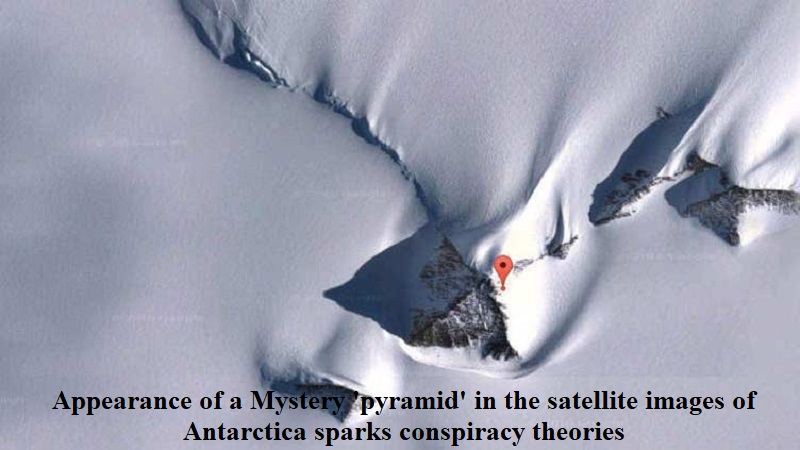
Antarctica, a continent renowned for its snow and ice coverage and lacking a permanent human population, has become the subject of intense debate following the appearance of a mysterious triangular structure in satellite images.
The images left social media users perplexed, sparking discussions about the origins of this alleged ‘pyramid.’ The large pyramid-shaped mass was spotted in satellite images of the Ellsworth Mountain range, located in the southern part of Antarctica. Other peculiar-looking peaks were also discovered in the area, with one measuring two kilometers in every direction of its square base, resembling Egypt’s Great Pyramid of Giza.
As the images of the ‘pyramids’ circulated online, people began sharing various theories about the construction of such an enormous structure. Some users humorously speculated, “Wait, how did they move the pyramids from Egypt to Antarctica?” Others proposed conspiracy theories involving the Illuminati or artificial life being responsible for the structure. Some even suggested that it belonged to a pre-flood civilization, claiming that Antarctica was once a warm place around 10,000 years ago.
However, scientists clarified that the enigmatic structure is a natural feature called a ‘pyramidal peaked mountain,’ commonly found in glaciated areas. Dr. Mitch Darcy, a geologist at the German Research Centre for Geosciences, explained that the pyramid-shaped peaks in the Ellsworth Mountains are composed of rock and are referred to as nunataks—rocky peaks protruding above glaciers or ice sheets. He emphasized that while this particular peak resembles a pyramid, it is a coincidence of nature and not a human-made construction.
Meanwhile, in the Southern Hemisphere, Antarctica experienced a record-breaking summer, with sea ice failing to return to expected levels. The National Snow and Ice Data Centre (NSIDC) reported that the sea ice remained at the lowest level for this time of year since recordkeeping began 45 years ago. In July, the sea ice was approximately 1.6 million square kilometers (0.6 million square miles) below the previous winter’s lowest record set in 2022. This unprecedented decline in sea ice signals a significant change in the system, as glaciologist Ted Scambos from the University of Colorado Boulder noted, emphasizing that the game has changed, and the system no longer behaves as it used to.

Post Your Comments